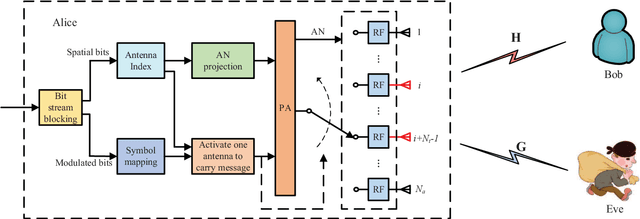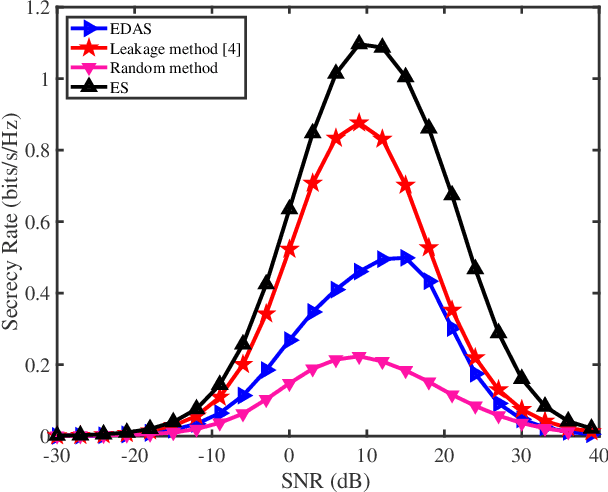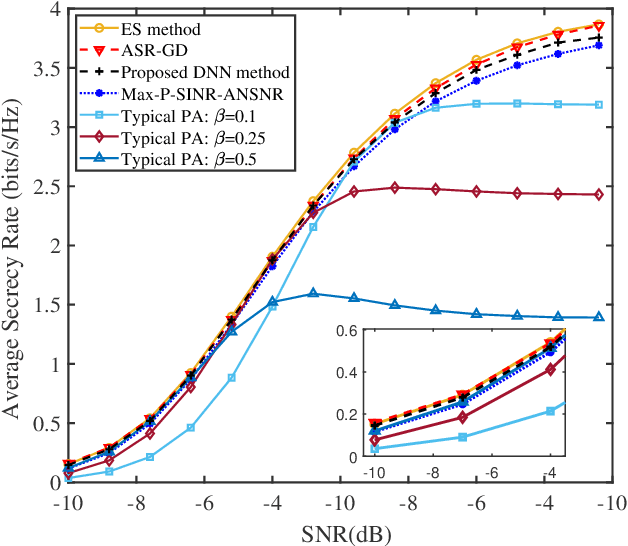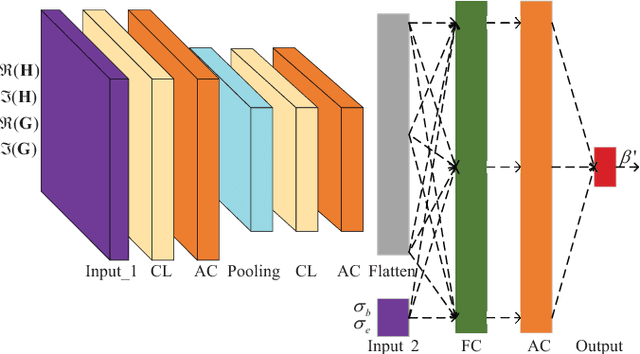Guiyang Xia
Beamforming Design for RIS-Aided AF Relay Networks
Feb 28, 2023Abstract:Since reconfigurable intelligent surface (RIS) is considered to be a passive reflector for rate performance enhancement, a RIS-aided amplify-and-forward (AF) relay network is presented. By jointly optimizing the beamforming matrix at AF relay and the phase shifts matrices at RIS, two schemes are put forward to address a maximizing signal-to-noise ratio (SNR) problem. Firstly, aiming at achieving a high rate, a high-performance alternating optimization (AO) method based on Charnes-Cooper transformation and semidefinite programming (CCT-SDP) is proposed, where the optimization problem is decomposed to three subproblems solved by CCT-SDP and rank-one solutions can be recovered by Gaussian randomization. While the optimization variables in CCT-SDP method are matrices, which leads to extremely high complexity. In order to reduce the complexity, a low-complexity AO scheme based on Dinkelbachs transformation and successive convex approximation (DT-SCA) is put forward, where matrices variables are transformed to vector variables and three decoupled subproblems are solved by DT-SCA. Simulation results verify that compared to two benchmarks (i.e. a RIS-assisted AF relay network with random phase and a AF relay network without RIS), the proposed CCT-SDP and DT-SCA schemes can harvest better rate performance. Furthermore, it is revealed that the rate of the low-complexity DT-SCA method is close to that of CCT-SDP method.
Spatial Modulation: an Attractive Secure Solution to Future Wireless Network
Mar 06, 2021



Abstract:As a green and secure wireless transmission method, secure spatial modulation (SM) is becoming a hot research area. Its basic idea is to exploit both the index of activated transmit antenna and amplitude phase modulation signal to carry messages, improve security, and save energy. In this paper, we review its crucial challenges: transmit antenna selection (TAS), artificial noise (AN) projection, power allocation (PA) and joint detection at the desired receiver. As the size of signal constellation tends to medium-scale or large-scale, the complexity of traditional maximum likelihood detector becomes prohibitive. To reduce this complexity, a low-complexity maximum likelihood (ML) detector is proposed. To further enhance the secrecy rate (SR) performance, a deep-neural-network (DNN) PA strategy is proposed. Simulation results show that the proposed low-complexity ML detector, with a lower-complexity, has the same bit error rate performance as the joint ML method while the proposed DNN method strikes a good balance between complexity and SR performance.
 Add to Chrome
Add to Chrome Add to Firefox
Add to Firefox Add to Edge
Add to Edge